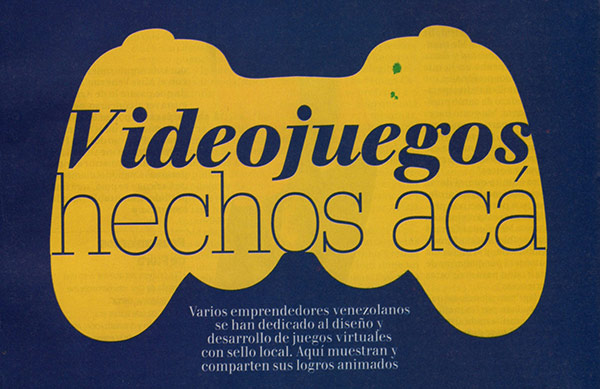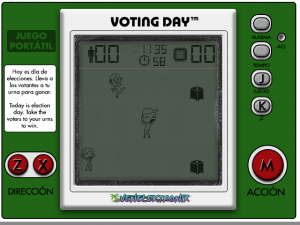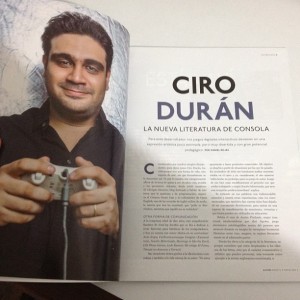18 Aug 2013

When the Global Game Jam did its first call in 2008, I really had no idea if it was possible to host a game jam in Caracas. I knew the concept of a game jam through TIGSource, but I didn’t know what did it take to do it, or if I even had the tools to do it. It was thanks to Yole, my wife, and the collaboration of many people, including participants, during 5 years, that the Caracas Game Jam has become the success it is now, creating a community of game developers that surprises many people, even us.
At the same time, I have also been involving myself more into the Global Game Jam. It excites me that the GGJ is an event organized by lots of volunteers from all parts of the world, and that’s why I collaborated last year with the organizers to coordinate Spanish-speaking locations in Latin America. It was a very enriching experience, where I talked to lots of people that, like me, also want to host a game jam in their city, and have their own motivations and ideas to propose.
Having said that, this year the event organizers have extended the invitation for me to be part of the Global Game Jam 2014 Executive Committee. The Executive Commitee is in charge of running the event, from coordinating locations to decide the theme, including the website maintenance and the search for sponsors for the global event. This is a voluntary position that I gladly accepted and I hope to collaborate with the participating locations from this corner of the world. We have done several meetings since some weeks ago, and I can tell you there are marvelous things coming to the event.
The work has already started, and by September we will make the call for new locations sign-up. Due to the position I’m taking, the organization of the Caracas Game Jam won’t be completely on me and Yole, but by collaborators that have worked long-time in the event, and in which I have complete trust in their good work. I will bring you news about the Caracas Game Jam very soon.
11 Aug 2013
 Click to download the article (PDF, 3MB)
Click to download the article (PDF, 3MB)
This is a story that got published in the Todo en Domingo magazine, a country-wide circulation inside the El Nacional newspaper, about game development in Venezuela. This story includes interviews with José Rafael Marcano, the La Cosa Entertainment team (winners of the 2012 Square-Enix gamedev contest), 4Geeks, and myself. Click on the image above to download the PDF. Thanks to Daniela Dávila for the conversation.
08 Apr 2013
 Click on the image to go play Voting Day
Click on the image to go play Voting Day
May I present you a new game this week. It’s called Voting Day and it’s my contribution to encourage all Venezuelans to go vote on next April 14th. The game is based in the old Game&Watch series of games, so the way to play is simple. Share it with your friends. For web browsers in desktops, cell phones and tablets.
Credits
Design and programming: Ciro Durán.
Graphics: Alexander Hass (@Gagz9k) and Ciro Durán.
Thanks to: Yole Quintero, Julián Rojas Millán and Saúl González.
01 Apr 2013
 Click on the image to play
Click on the image to play
Tele is the only product made by Televisión del Milenio, a Venezuelan regional TV channel that started by buying old equipment to a national TV channel, but never could get on air because of all the red tape. Instead of going live, the only production team at the TV channel did a videogame that reflects on the team’s sentiment regarding how a party, or a group of parties, can compete agains the State’s powers to be able to broadcast their message.
I invite you to play this game, product of the One Game a Month challenge, and a way to give something to the politics discussion in the country.
29 Mar 2013

For March’s issue, DirecTV’s magazine Access (you may know it as Sky in your country) interviewed me as part of a series of interviews to professionals of several areas, including Consuelo Di Carlo, from Instagramers Venezuela, Gustavo Jimenez, a 3D animator, and myself.
You may read the interview by journalist Daniel Rojas in this PDF (Spanish only, sorry), or receiving the magazine with your subscription to this satellite TV system.
The screenshot you’ll see inside is from our May 2012 game HeliTaxi, a game for the BlackBerry PlayBook we did for the Reto BlackBerry contest, and for which we won a honorary mention for the Venezuelan leg. The team that produced HeliTaxi is: Yole Quintero at the design, Miguel Obando at programming, Adolfo Roig as the visual artist, Lenin Quintero at sound and effects, y and myself at programming and producing.




